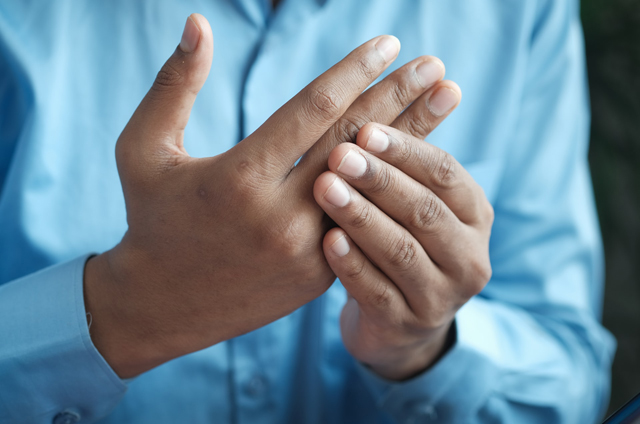Here are 5 Signs You are Dealing with Arthritis Pain
Arthritis is a common condition that affects one out of every 45 U.S. adults. Some behaviors and characteristics increase a person’s chances of developing arthritis or making it worse. You can control some of them, but not all.
There are also many types of arthritis – over 100 to be exact! The most common types are osteoarthritis, rheumatoid arthritis, psoriatic arthritis, fibromyalgia and gout. Pain can range from mild to severe, with some people experiencing debilitating symptoms that affect their day to day life.
Have you been experiencing some unique symptoms and you’re concerned that they could be pointing to arthritis? Below are five signs that you are likely experiencing arthritis pain. Please note that you should still schedule an appointment with your doctor for a diagnosis.
1. Chronic Joint Pain
Joint pain that lingers on or regularly flares up is a top indication of arthritis. Without treatment, this pain gets worse, not better. If you have osteoarthritis, the cartilage breaks down, causing pain from the bones rubbing against each other. If you have rheumatoid arthritis, which comes from the immune system, your pain will be symmetrical.
2. Stiff Joints
Joint stiffness is another common sign of arthritis. When the condition sets in, it causes the joints to have difficulty moving. People often find that the stiffness is worse in the mornings and in cold weather. Keeping the joints loose is key to managing stiffness, so you may benefit from a morning routine that involves stretching and light exercise.
3. Swelling around the Joints
Swollen joints are a sign that there’s fluid in the tissues around the joints. Swelling is common among many types of arthritis, including rheumatoid arthritis, osteoarthritis and gout. The best ways to treat swollen joints are by taking an NSAID and applying heat and ice. Some people also benefit from steroid injections.
4. Joint Redness
If your joints are hot and inflamed, you’ll likely notice that they are red, too. As swelling increases, the redness typically increases, too. In order to reduce redness, you’ll need to treat the underlying causes, which are typically inflammation and swelling. NSAIDs, hot/cold therapy and steroid injections can help. They are not long-term solutions, but they can help during flare-ups.
5. Decreased Range of Motion
Arthritis makes it difficult to move freely. Not only is it painful, but also it’s difficult to move when your joints are swollen, stiff and inflamed. Many people find that they struggle most in the mornings and feel better as they loosen up during the day. While movement may be uncomfortable, it’s still one of the best ways to fight arthritis, as it improves circulation.
Find Relief for Painful, Debilitating Arthritis Pain
Jersey Rehab has extensive experience treating all types of arthritis. Not only can our pain specialists help manage your pain, but also they can recommend alternative treatments like steroid injections, platelet-rich plasma and stem cell therapy. Book an appointment with our pain management doctors to learn more.

